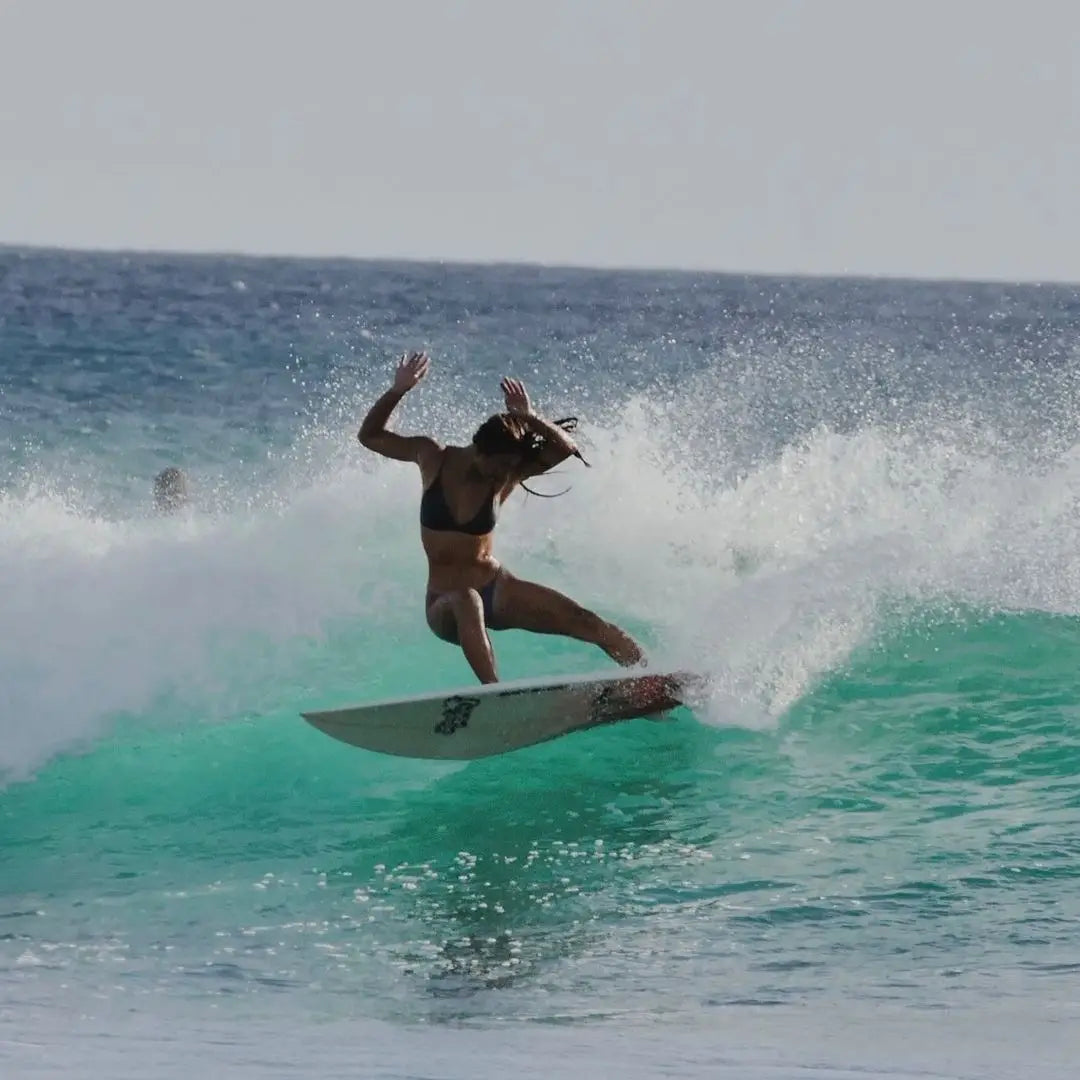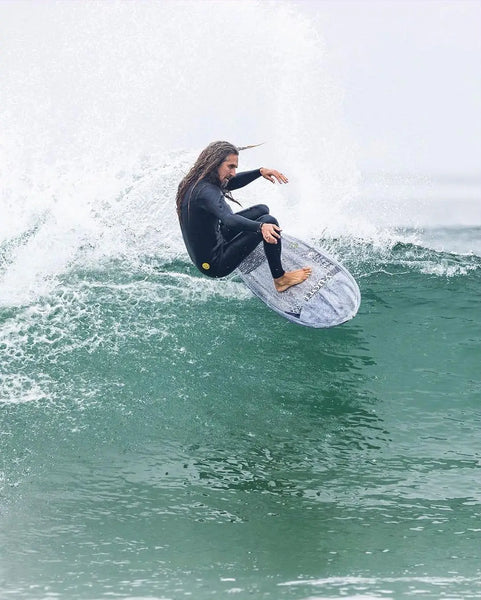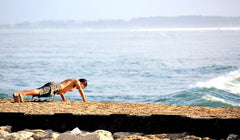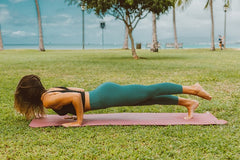Surf Better With This 15-minute Fitness Routine
Share
15-MINUTE FITNESS ROUTINE FOR SURFERS

While being a surfer has long been associated with being fit and tan, we don’t exactly have a celebrated history of training. Unlike other athletes who cross-train and do cardio workouts to improve their performance on the court or in the field; surfers were better known for partying than for running, stretching, and lifting weights.
Surfing was quite the counter-culture, and the beach lifestyle lent itself more to drinking and smoking herb than it did eating a macrobiotic diet and practicing yoga. As far as we were concerned, the best training for surfing was surfing—and the rest of the time, we intended to get loose. But over the past decade or so, that is beginning to change.
Starting with pro surfers like Taylor Knox and Mick Fanning and continued by the new crop of world tour competitors and big wave chargers, training for surfing has become quite popular. Non-pros have jumped on the bandwagon as well!
It seems like everyone who surfs also paddles, runs, bikes, swims, practices yoga, does pilates, CrossFit, or something else to keep themselves fit and limber for their surf sessions. If you haven’t jumped on the training-for-surf bandwagon or if your busy lifestyle simply doesn’t afford you the time to train full time, you can still tune your body up for your next surf with a short 15-minute surfing fitness program.
Dig in and follow along as we get you fit for life and for wave riding!
Warm up (3 minutes): Start with some gentle movement to get your blood flowing, then eventually start moving a bit faster and with more energy. You can warm up by jogging around the yard, doing jumping jacks, jump roping, or any other mild cardiovascular exercise that doesn’t require you to move far from your home or wherever you are training.

Pushups (3 minutes): Regardless of your fitness level, try to incorporate some pushups into your workout. At first you might only do a few—or you might end up doing modified pushups when you first start—but eventually you will get stronger and your reps will increase. Do two sets of pushups at whatever number of reps feels good for you. Remember to be very aware of your shoulders and any potential stress or injury. Surfers do a repetitive motion activity with our shoulders (paddling), we need to be careful not to exacerbate any mechanical issues such as rotator cuff strains or impingements. While you do need to exert effort to get stronger, it is important to know the difference between unhealthy pain related to injury and healthy suffering for the sake of fitness
Triceps dips (3 minutes): When it comes to paddling, surfers actually use our triceps more than our biceps, so it’s a good idea to make sure your triceps are strong and ready for action when you jump on a board. Do two sets of triceps dips by placing your palms backwards on the edge of a chair and your feet on the ground in front of the chair, lower yourself toward the ground and then lift yourself back up. As with pushups, you may not be able to do a lot of these when you first start, but after awhile you will find yourself getting stronger and your reps will increase.
Crunches or planks (3 minutes): The core is at the center of everything we do,

and is an integral part of any athletic movement—especially surfing; which involves a lot of lower back arching, twisting, and bending. While our lower backs will naturally be strong from paddling, it is important to balance them out with strong abdominal muscles. Add a few minutes of crunches or planks to your routine to strengthen your core.
Stretch (3 minutes): As a cool down at the end of your workout, do some mild stretches to make sure you counteract any over-tightness of your muscles. Stretch your shoulders and arms, which will likely be tight after your workout. Also stretch out your lower back, your hamstrings, and your hips, as these are areas that often suffer from tightness. (For more stretches that help you surf better, check out our monthly yoga poses.)
When we think of training, we often think only about doing exercises. But it’s important to understand that training actually has three parts: exertion, recovery, and nutrition. If you do your workout routine every day without rest, your muscles won’t have an opportunity to rebuild and recover after you break them down with your training. Schedule rest days into your routine, and make sure you are eating healthy, whole foods that provide all of the nutrients, protein, healthy fats, and healthy carbs that you need to rebuild and restock.
Congratulations for reaching here, now you're more than ready to surf better and safer with our Surfing Gears and Accessories. Check them out now!
More to Read...
